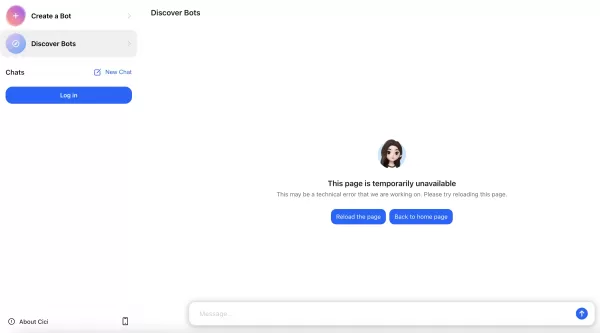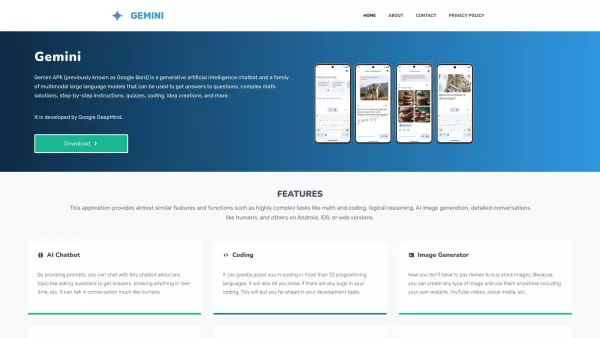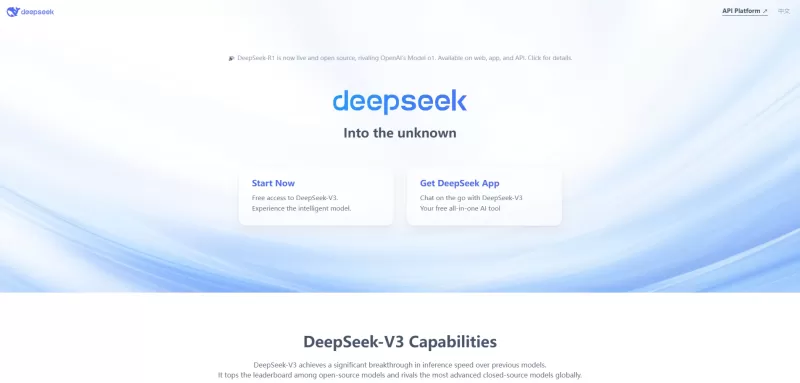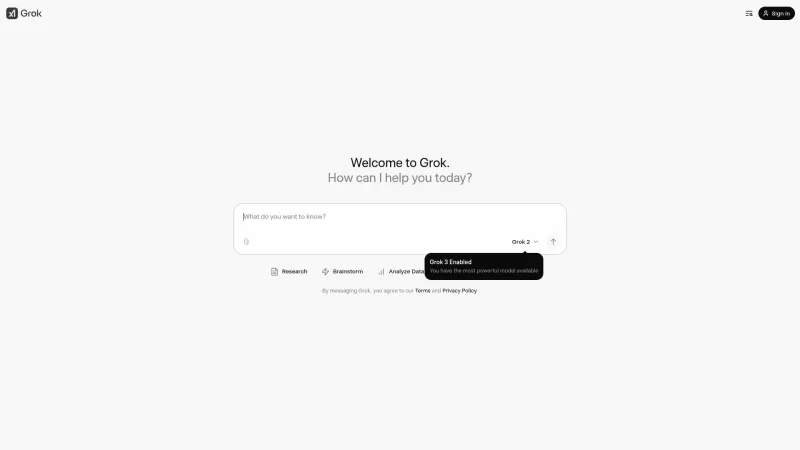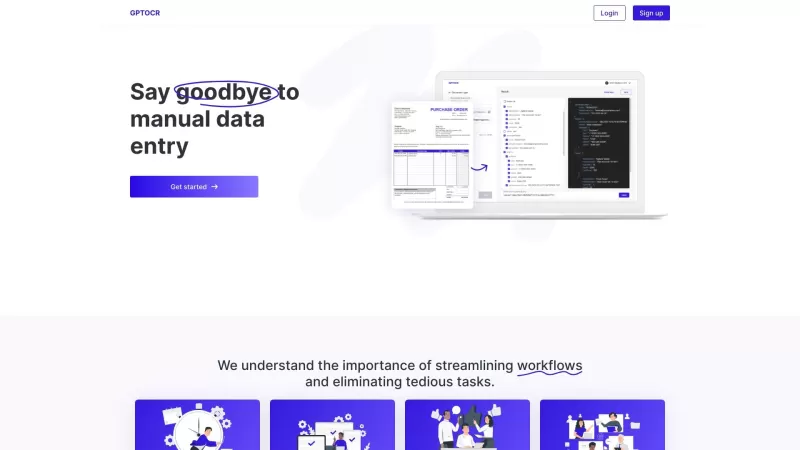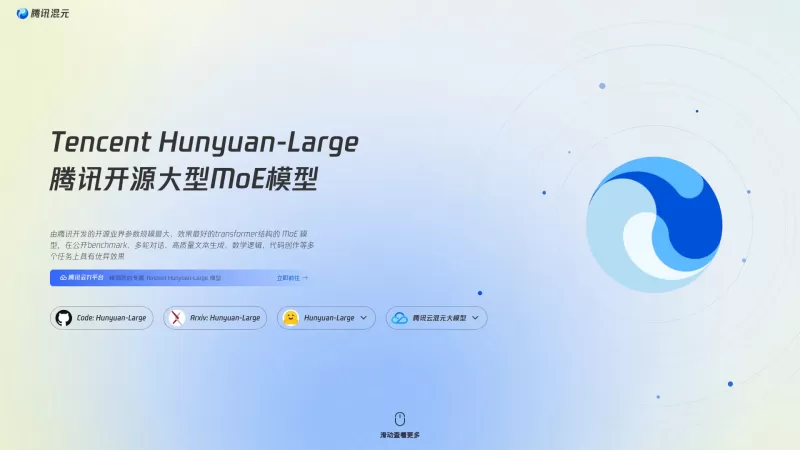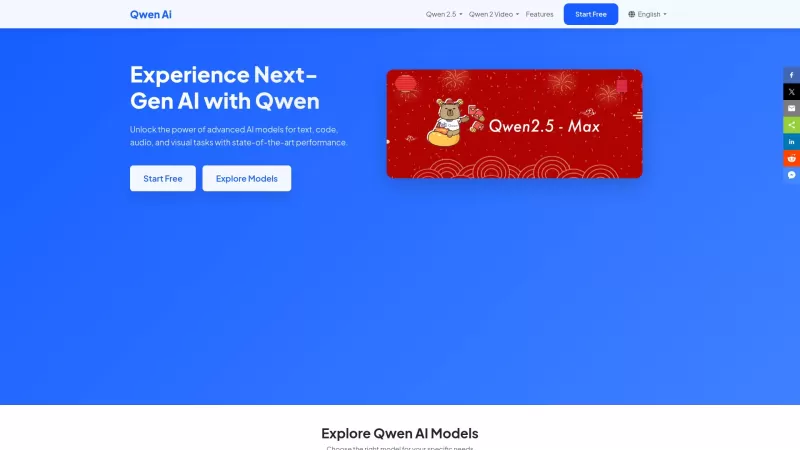AI Industry's Urgent Need for Revision Control Graph Databases
The AI sector is advancing swiftly, requiring advanced tools to manage complex data and workflows. Traditional relational databases often fall short in addressing AI's dynamic data needs, particularly for revision tracking, collaboration, and governance. This article examines why revision control graph databases are critical for overcoming these challenges and driving AI innovation.
Key Points
AI development demands robust data management solutions.
Revision control graph databases enhance tracking and teamwork.
Graph databases excel in modeling relationships and metadata.
Document interfaces streamline data interaction and schema management.
TerminusDB offers powerful versioning and collaboration features.
Adopting new data modeling is essential for AI progress.
The Urgent Need for Better Data Management in AI
The Limitations of Relational Databases in AI
AI relies heavily on data, but its complexity often overwhelms traditional relational databases. Their rigid schemas and table-based structures struggle to manage evolving AI datasets efficiently.
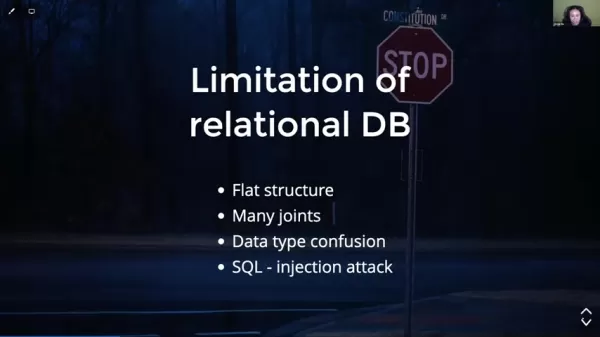
Their flat structure, frequent need for joins, and risk of data type errors make them suboptimal for AI. Additionally, vulnerabilities like SQL injection threaten data security. As AI data grows, more effective management solutions are critical.
Revision Control Graph Databases: A Superior Approach
Revision control graph databases provide a powerful alternative, merging graph database flexibility with versioning capabilities tailored for AI’s unique challenges.
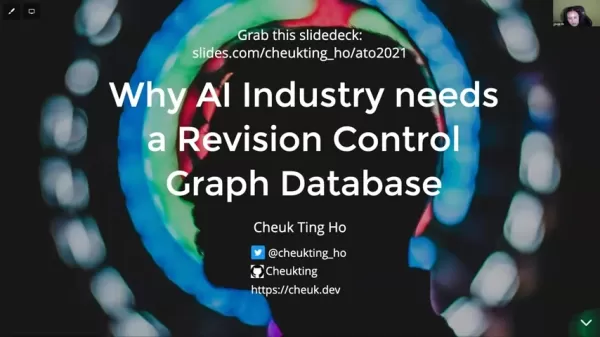
They enable robust data management, change tracking, and seamless collaboration. Features include full revision histories, branch/merge workflows, and flexible, schemaless JSON data layers that adapt without locking into outdated schemas.
Understanding the Core Technologies
Revision Control: Tracking Data's Evolution
Like Git for code, revision control graph databases track every data change, addition, or deletion, maintaining a complete history. This ensures reproducibility, supports auditing, and allows reverting to specific data states to analyze model performance.
Graph Databases: Modeling Relationships
Graph databases store data as nodes and edges, ideal for modeling complex AI relationships.
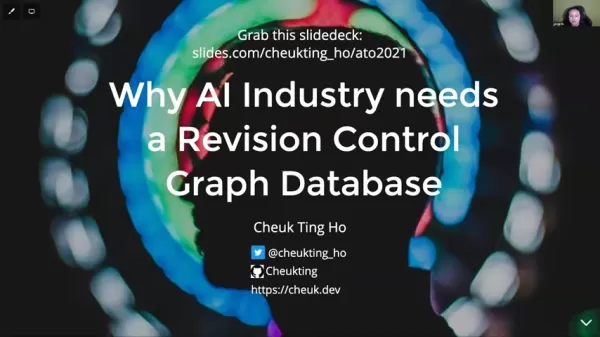
They efficiently handle metadata, clarifying data characteristics and provenance, enhancing governance and dependency tracking for AI models.
What is a Semantic Graph?
Semantic graphs add context via ontologies and vocabularies, defining entity relationships for smarter queries and reasoning. This structure, more organized than a data lake, ensures safer, accessible data for accurate AI models.

Why a Document Interface?
Some revision control graph databases use document interfaces for intuitive, object-oriented data modeling. These provide clear schemas, support comments, and use JSON-LD to prevent injection attacks, enabling standardized service interaction.
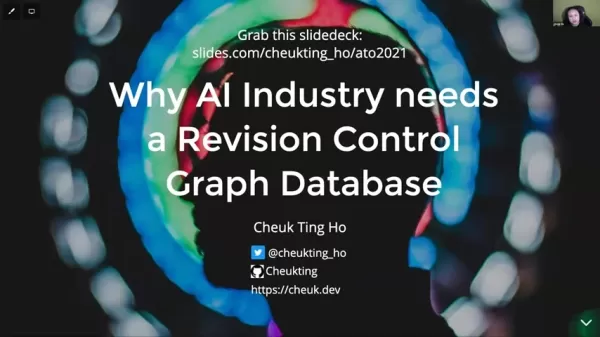
Getting Started with TerminusDB: A Practical Example
Installing and Setting Up TerminusDB Locally
TerminusDB, an open-source revision control graph database, can be installed locally and accessed via a web browser. Follow the bootstrap steps in its documentation, requiring the Python client for command-line interaction.
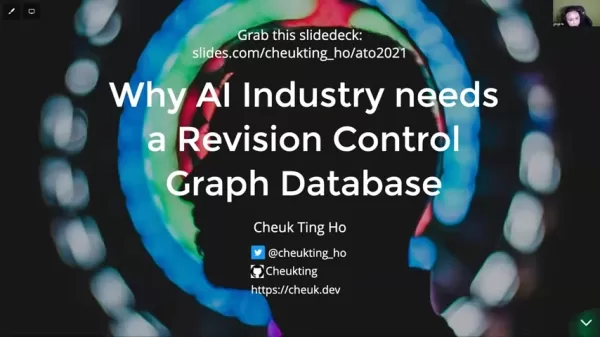
Once installed, it runs locally on port 6363 at http://127.0.0.1:6363/.
Using the TerminusDB Command Line
From your local instance, use TerminusDB commands to manage your database. Run terminusdb --help to view options like listing documents, branching, switching branches, viewing schemas, or checking commit logs.
TerminusDB Pricing Plans
Pricing Details for TerminusX, a Fully Managed Cloud Service
TerminusX, TerminusDB’s cloud service, supports collaborative data lifecycle management. Currently in public beta, it’s free, with a free developer plan post-beta, offering:
- Data product creation
- Versioning for data and schemas
- Data curation and management
- Full data lifecycle oversight
- Complete data lineage
- Relationship discovery
- Data provenance
- Data product discovery
Pros and Cons of Revision Control Graph Databases for AI
Pros
Advanced data tracking and versioning
Enhanced collaboration and reproducibility
Superior relationship modeling
Strong data governance
Drives AI innovation
Cons
Steeper learning curve than traditional databases
Complex data modeling
Performance issues with large graphs
Fewer mature tools compared to relational databases
TerminusDB Key Features
Key Features of TerminusDB
TerminusDB offers critical tools for AI data versioning, including:
- Revision Control: Tracks all data changes.
- Branching and Merging: Supports parallel data experimentation and seamless merging.
- Data Governance: Ensures ownership, access control, and auditing.
- Linked Data: Integrates diverse data sources.
- DataOps Enablement: Automates pipelines and ML workflows with layered data storage.
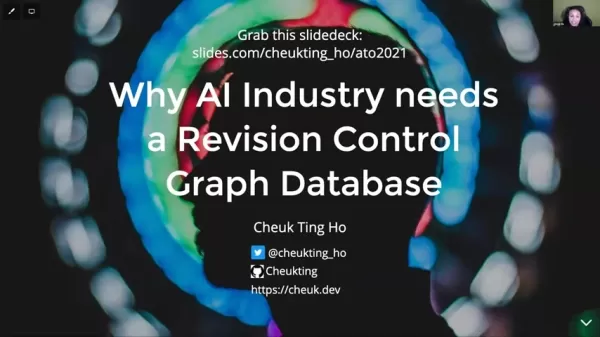
Use Cases for Revision Control Graph Databases in AI
Specific AI Scenarios that Benefit from These Technologies
Revision control graph databases support various AI applications:
- Explainable AI (XAI): Traces data lineage to clarify model predictions.
- Data Auditing: Tracks access and changes for regulatory compliance.
- Collaborative Model Development: Enables teamwork without compromising data integrity.
- Data Provenance Tracking: Verifies data sources and quality for training.
- Reproducible Research: Ensures experiment reproducibility with precise data versioning.
FAQ
What is a revision control graph database?
It combines graph databases’ relationship modeling with revision control for tracking data changes, offering full history, branch/merge workflows, and flexible JSON data layers.
How does TerminusDB help with data auditing?
TerminusDB tracks data access and modifications, ensuring compliance with privacy regulations by logging who accessed data and when.
What is DataOps and how can it support machine learning?
DataOps automates data pipelines, tracking key factors in ML model decisions and providing metadata to uncover data-model dependencies.
Related Questions
What are the key benefits of using a graph database for AI data management?
Graph databases excel in:
- Relationship Modeling: Capturing complex data connections.
- Metadata Storage: Managing data context and provenance.
- Flexible Schema: Adapting to evolving AI needs.
- Scalability: Handling large datasets and complex queries.
How can revision control improve collaboration on AI projects?
Revision control allows concurrent data work, with branching for experimentation, merging changes, and tracking modifications to prevent conflicts and ensure reproducibility.
How can TerminusDB support data modeling for machine learning?
TerminusDB powers ML workflows with collaborative, versioned data management, enabling transparent dataset creation and analysis of key factors in model decisions.
Related article
 AI-Generated Crossover Unites Arthur Morgan and Joshua Graham in Gaming Multiverse
When Gaming Worlds Collide: Arthur Morgan Meets the Burned ManPicture a realm where legendary game characters step beyond their own stories - what unfolds when Red Dead Redemption 2's Arthur Morgan crosses paths with Fallout: New Vegas' scarred proph
AI-Generated Crossover Unites Arthur Morgan and Joshua Graham in Gaming Multiverse
When Gaming Worlds Collide: Arthur Morgan Meets the Burned ManPicture a realm where legendary game characters step beyond their own stories - what unfolds when Red Dead Redemption 2's Arthur Morgan crosses paths with Fallout: New Vegas' scarred proph
 Microsoft hosts xAI's advanced Grok 3 models in new AI collaboration
Earlier this month, my *Notepad* investigative journalism uncovered Microsoft's plans to integrate Elon Musk's Grok AI models - revelations that have now been officially confirmed. Today at Microsoft's annual Build developer conference, company execu
Microsoft hosts xAI's advanced Grok 3 models in new AI collaboration
Earlier this month, my *Notepad* investigative journalism uncovered Microsoft's plans to integrate Elon Musk's Grok AI models - revelations that have now been officially confirmed. Today at Microsoft's annual Build developer conference, company execu
 Depeche Mode's Faith Songs Get AI Remix & Deep Analysis
(or if shorter needed)
AI Remixes and Analyzes Depeche Mode's Songs of Faith
Depeche Mode's groundbreaking album Songs of Faith and Devotion stands as a defining moment in electronic music's evolution. Released in 1993 during the band's creative zenith, this masterwork boldly redefined their signature sound by blending indust
Comments (2)
0/200
Depeche Mode's Faith Songs Get AI Remix & Deep Analysis
(or if shorter needed)
AI Remixes and Analyzes Depeche Mode's Songs of Faith
Depeche Mode's groundbreaking album Songs of Faith and Devotion stands as a defining moment in electronic music's evolution. Released in 1993 during the band's creative zenith, this masterwork boldly redefined their signature sound by blending indust
Comments (2)
0/200
![RonaldMitchell]() RonaldMitchell
RonaldMitchell
 August 25, 2025 at 3:01:02 AM EDT
August 25, 2025 at 3:01:02 AM EDT
This article really opened my eyes to how outdated traditional databases are for AI! 😮 Graph databases sound like a game-changer for managing all that complex data. I wonder how fast companies will adopt this?


 0
0
![WillieScott]() WillieScott
WillieScott
 August 23, 2025 at 5:01:21 PM EDT
August 23, 2025 at 5:01:21 PM EDT
This article really opened my eyes to how outdated traditional databases are for AI! It's wild to think about the chaos of managing all that dynamic data without something like a graph database. Anyone else wondering how fast this could revolutionize AI workflows? 🤯


 0
0
The AI sector is advancing swiftly, requiring advanced tools to manage complex data and workflows. Traditional relational databases often fall short in addressing AI's dynamic data needs, particularly for revision tracking, collaboration, and governance. This article examines why revision control graph databases are critical for overcoming these challenges and driving AI innovation.
Key Points
AI development demands robust data management solutions.
Revision control graph databases enhance tracking and teamwork.
Graph databases excel in modeling relationships and metadata.
Document interfaces streamline data interaction and schema management.
TerminusDB offers powerful versioning and collaboration features.
Adopting new data modeling is essential for AI progress.
The Urgent Need for Better Data Management in AI
The Limitations of Relational Databases in AI
AI relies heavily on data, but its complexity often overwhelms traditional relational databases. Their rigid schemas and table-based structures struggle to manage evolving AI datasets efficiently.

Their flat structure, frequent need for joins, and risk of data type errors make them suboptimal for AI. Additionally, vulnerabilities like SQL injection threaten data security. As AI data grows, more effective management solutions are critical.
Revision Control Graph Databases: A Superior Approach
Revision control graph databases provide a powerful alternative, merging graph database flexibility with versioning capabilities tailored for AI’s unique challenges.

They enable robust data management, change tracking, and seamless collaboration. Features include full revision histories, branch/merge workflows, and flexible, schemaless JSON data layers that adapt without locking into outdated schemas.
Understanding the Core Technologies
Revision Control: Tracking Data's Evolution
Like Git for code, revision control graph databases track every data change, addition, or deletion, maintaining a complete history. This ensures reproducibility, supports auditing, and allows reverting to specific data states to analyze model performance.
Graph Databases: Modeling Relationships
Graph databases store data as nodes and edges, ideal for modeling complex AI relationships.

They efficiently handle metadata, clarifying data characteristics and provenance, enhancing governance and dependency tracking for AI models.
What is a Semantic Graph?
Semantic graphs add context via ontologies and vocabularies, defining entity relationships for smarter queries and reasoning. This structure, more organized than a data lake, ensures safer, accessible data for accurate AI models.

Why a Document Interface?
Some revision control graph databases use document interfaces for intuitive, object-oriented data modeling. These provide clear schemas, support comments, and use JSON-LD to prevent injection attacks, enabling standardized service interaction.

Getting Started with TerminusDB: A Practical Example
Installing and Setting Up TerminusDB Locally
TerminusDB, an open-source revision control graph database, can be installed locally and accessed via a web browser. Follow the bootstrap steps in its documentation, requiring the Python client for command-line interaction.

Once installed, it runs locally on port 6363 at http://127.0.0.1:6363/.
Using the TerminusDB Command Line
From your local instance, use TerminusDB commands to manage your database. Run terminusdb --help to view options like listing documents, branching, switching branches, viewing schemas, or checking commit logs.
TerminusDB Pricing Plans
Pricing Details for TerminusX, a Fully Managed Cloud Service
TerminusX, TerminusDB’s cloud service, supports collaborative data lifecycle management. Currently in public beta, it’s free, with a free developer plan post-beta, offering:
- Data product creation
- Versioning for data and schemas
- Data curation and management
- Full data lifecycle oversight
- Complete data lineage
- Relationship discovery
- Data provenance
- Data product discovery
Pros and Cons of Revision Control Graph Databases for AI
Pros
Advanced data tracking and versioning
Enhanced collaboration and reproducibility
Superior relationship modeling
Strong data governance
Drives AI innovation
Cons
Steeper learning curve than traditional databases
Complex data modeling
Performance issues with large graphs
Fewer mature tools compared to relational databases
TerminusDB Key Features
Key Features of TerminusDB
TerminusDB offers critical tools for AI data versioning, including:
- Revision Control: Tracks all data changes.
- Branching and Merging: Supports parallel data experimentation and seamless merging.
- Data Governance: Ensures ownership, access control, and auditing.
- Linked Data: Integrates diverse data sources.
- DataOps Enablement: Automates pipelines and ML workflows with layered data storage.

Use Cases for Revision Control Graph Databases in AI
Specific AI Scenarios that Benefit from These Technologies
Revision control graph databases support various AI applications:
- Explainable AI (XAI): Traces data lineage to clarify model predictions.
- Data Auditing: Tracks access and changes for regulatory compliance.
- Collaborative Model Development: Enables teamwork without compromising data integrity.
- Data Provenance Tracking: Verifies data sources and quality for training.
- Reproducible Research: Ensures experiment reproducibility with precise data versioning.
FAQ
What is a revision control graph database?
It combines graph databases’ relationship modeling with revision control for tracking data changes, offering full history, branch/merge workflows, and flexible JSON data layers.
How does TerminusDB help with data auditing?
TerminusDB tracks data access and modifications, ensuring compliance with privacy regulations by logging who accessed data and when.
What is DataOps and how can it support machine learning?
DataOps automates data pipelines, tracking key factors in ML model decisions and providing metadata to uncover data-model dependencies.
Related Questions
What are the key benefits of using a graph database for AI data management?
Graph databases excel in:
- Relationship Modeling: Capturing complex data connections.
- Metadata Storage: Managing data context and provenance.
- Flexible Schema: Adapting to evolving AI needs.
- Scalability: Handling large datasets and complex queries.
How can revision control improve collaboration on AI projects?
Revision control allows concurrent data work, with branching for experimentation, merging changes, and tracking modifications to prevent conflicts and ensure reproducibility.
How can TerminusDB support data modeling for machine learning?
TerminusDB powers ML workflows with collaborative, versioned data management, enabling transparent dataset creation and analysis of key factors in model decisions.
 AI-Generated Crossover Unites Arthur Morgan and Joshua Graham in Gaming Multiverse
When Gaming Worlds Collide: Arthur Morgan Meets the Burned ManPicture a realm where legendary game characters step beyond their own stories - what unfolds when Red Dead Redemption 2's Arthur Morgan crosses paths with Fallout: New Vegas' scarred proph
AI-Generated Crossover Unites Arthur Morgan and Joshua Graham in Gaming Multiverse
When Gaming Worlds Collide: Arthur Morgan Meets the Burned ManPicture a realm where legendary game characters step beyond their own stories - what unfolds when Red Dead Redemption 2's Arthur Morgan crosses paths with Fallout: New Vegas' scarred proph
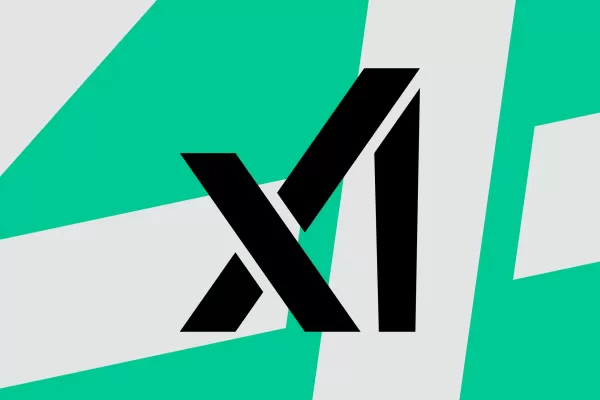 Microsoft hosts xAI's advanced Grok 3 models in new AI collaboration
Earlier this month, my *Notepad* investigative journalism uncovered Microsoft's plans to integrate Elon Musk's Grok AI models - revelations that have now been officially confirmed. Today at Microsoft's annual Build developer conference, company execu
Microsoft hosts xAI's advanced Grok 3 models in new AI collaboration
Earlier this month, my *Notepad* investigative journalism uncovered Microsoft's plans to integrate Elon Musk's Grok AI models - revelations that have now been officially confirmed. Today at Microsoft's annual Build developer conference, company execu
 Depeche Mode's Faith Songs Get AI Remix & Deep Analysis
(or if shorter needed)
AI Remixes and Analyzes Depeche Mode's Songs of Faith
Depeche Mode's groundbreaking album Songs of Faith and Devotion stands as a defining moment in electronic music's evolution. Released in 1993 during the band's creative zenith, this masterwork boldly redefined their signature sound by blending indust
Depeche Mode's Faith Songs Get AI Remix & Deep Analysis
(or if shorter needed)
AI Remixes and Analyzes Depeche Mode's Songs of Faith
Depeche Mode's groundbreaking album Songs of Faith and Devotion stands as a defining moment in electronic music's evolution. Released in 1993 during the band's creative zenith, this masterwork boldly redefined their signature sound by blending indust
 August 25, 2025 at 3:01:02 AM EDT
August 25, 2025 at 3:01:02 AM EDT
This article really opened my eyes to how outdated traditional databases are for AI! 😮 Graph databases sound like a game-changer for managing all that complex data. I wonder how fast companies will adopt this?


 0
0
 August 23, 2025 at 5:01:21 PM EDT
August 23, 2025 at 5:01:21 PM EDT
This article really opened my eyes to how outdated traditional databases are for AI! It's wild to think about the chaos of managing all that dynamic data without something like a graph database. Anyone else wondering how fast this could revolutionize AI workflows? 🤯


 0
0

